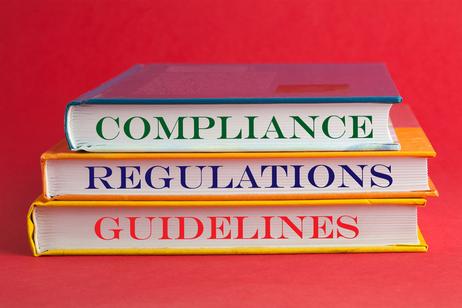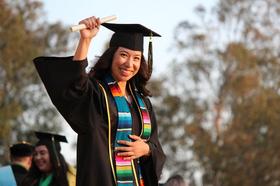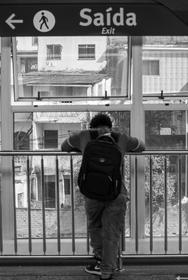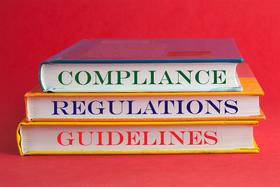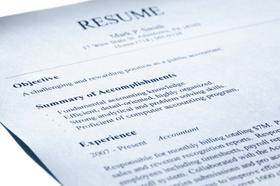State Regulation of Private Schools provides a brief description, by state, of the legal requirements that apply to private schools. In addition, each state entry includes statistics on private schools by type in the state. This manual is intended to serve as a reference for public and private school officials, state policymakers, and researchers. This manual is an update of a 1993 publication by the (then) Office of Private Education, The Regulation of Private Schools in America: A State-by-State Analysis.
To ensure the accuracy of the analysis, contact persons in each state were designated by the Chief State School Officer. Each state summary was submitted to the appropriate state department of education for their consideration and approval. The individuals in each state who reviewed and amended these summaries were key to the timely and accurate updating of this information. Their participation, cooperation, and expertise are most appreciated. For the first time, legal requirements regarding homeschooling are included in each state. s summary. Additionally, state data on private schools from the U.S. Department of Education National Center for Education Statistics are included for each state.
This document is intended to provide helpful guidance. It creates no new rights or responsibilities. Additionally, nothing in this study reflects the position of the U.S. Department of Education as to the meaning or effect of any state legal requirement. Readers are encouraged to consult state constitutions and the full text of relevant case law, statutes, and regulations.
Under the United States Constitution, parents have a fundamental right to direct the education of their children. In 1925 the Supreme Court recognized that "liberty," protected by the Fourteenth Amendment, includes the right to choose a private education. Confronted with an Oregon statute mandating public school attendance, the Supreme Court ruled the statute unconstitutional. Pierce v. Society of Sisters of the Holy Names of Jesus and Mary, 268 U.S. 510 (1925). In the words of the Court,
The fundamental theory of liberty upon which all governments in this Union repose excludes any general power of the state to standardize its children by forcing them to accept instruction from public teachers only. The child is not the mere creature of the state; those who nurture him and direct his destiny have the right, coupled with the high duty, to recognize and prepare him for additional obligations. (268 U.S. at 535)
Today, a parent's right to choose a private education is reflected in the statutes of all fifty states. The compulsory school attendance laws typically specify private education as an alternative or exception to public school attendance requirements.
It is also well-established that states have the power to regulate private schools. Based on the "high responsibility for education of its citizens, [a State] may impose reasonable regulations for the control and duration of basic education." Wisconsin v. Yoder, 406 U.S. 205, 213 (1972). See also Board of Ed. of Cent. Sch. Dist. No.1 v. Allen, 392 U.S. 236, 246-247 (1968). The state's interest in an informed and self-sufficient citizenry capable of participating in a democratic society is generally cited to support the regulation of private schools. Yoder at 221; Kentucky State Board v. Rudasill, 589 S.W.2d 877, 883 (1979).
The right to regulate is not without limitations, however. Since 80 percent of America's private schools are religious institutions, any regulation of these schools must conform to the First Amendment's guarantee of the free exercise of religion. The principle is generally reflected in most, if not all, of the state codes. For example, special provisions are included for church-related schools, as in the laws of Alabama and Tennessee, or exemptions are provided for schools operated by religious organizations, as in the laws of Wyoming and Nebraska.
A state's excessive regulation may eliminate a parent's right to direct the education of their child. In 1923, the Supreme Court struck down a Nebraska statute that prohibited the teaching of German to elementary school-age children. The Court determined that the law unreasonably interfered with the power of parents to control their children's education. Meyer v. State of Nebraska, 262 U.S. 390 (1923). Similarly, in 1927, the Supreme Court held an unconstitutional Hawaiian law that regulated the teachers, curriculum, and textbooks of private language schools and placed control of the schools in public officers.
"Enforcement," the Court said, "would deprive parents of fair opportunity to procure instruction for their children, which they think is important and we cannot say is harmful." Farrington v. T. Tokushige, 273 U.S. 284, 298 (1927).
In 1976, the Ohio Supreme Court applied Farrington in a constitutional challenge to the state's "minimum standards" governing nonpublic schools. The state court determined that the standards were "so pervasive and all-encompassing that total compliance with each and every standard by a non-public school would effectively eradicate the distinction between public and non-public education, and thereby deprive these appellants of their traditional interest as parents to direct the upbringing and education of their children". Ohio v. Whisner, 351 N.E.2d 750, 768 (1976).
The challenge to state legislators in regulating private schools, then, is to draft legislation that 1) respects the fundamental right of parents to direct the education of their children, 2) protects the state's interest in an informed citizenry but avoids interference with religious beliefs unless compelling interests are at issue, and then only in the least restrictive manner, and 3) avoids comprehensive regulation of private education that would deprive parents of any choice in education.
The study considers several areas of state regulation of private schools. Summary charts in each area follow the state-by-state descriptions in this manual.
- Regulation of school standards, teacher certification, and curriculum;
- Regulation of health and safety issues;
- Home Schooling, and
- Public benefits to private school students.
This video from the Connecticut Department of Education examines teacher diversity.
The issue of public benefits for private school students is particularly noteworthy. The public funding of private education is restricted under the United States Constitution. State statutes reflect the numerous decisions handed down by the Supreme Court. The Establishment Clause of the First Amendment prohibits "government inculcation of religious beliefs." Agostini v. Felton, 117 S. Ct. 1997, 2010 (1997). But there is no absolute prohibition against private school children, or even religious institutions, participating in government-sponsored social welfare programs. Bowen v. Kendrick, 487 U.S. 589, 609 (1988). The difficulty of applying these principles has produced a wealth of Supreme Court decisions.
The Supreme Court has upheld a New Jersey statute that made transportation equally available to both public and private school children, Everson v. Board of Education of Ewing Tp., 330 U.S. 1 (1947); upheld a New York statute providing free textbooks on loan to parochial school students, Board of Education of Cent. Sch. Dist. No. 1 v. Allen, 392 U.S. 236 (1968); invalidated Rhode Island and Pennsylvania provisions that paid salary supplements to nonpublic school teachers of secular subjects, Lemon v. Kurtzman, 403 U.S. 602 (1971); struck down a New York statute that reimbursed religious schools for teacher-prepared tests, Levitt v. Committee for Public Education, 413 U.S. 472 (1973); upheld an Ohio statute permitting diagnostic and therapeutic services to nonpublic school students but struck down the provision of instructional materials and field trip transportation left within the control of the nonpublic school, Wolman v. Walter, 433 U.S. 229 (1977); upheld a New York statute reimbursing nonpublic schools for state mandated recordkeeping and testing, Committee for Public Education & Religious Liberty v. Regan, 444 U.S. 646 (1980); upheld a Minnesota statue providing an income tax deduction for tuition, textbooks, and transportation that benefited parents of children attending public, sectarian and nonsectarian schools, Mueller v. Allen, 463 U.S. 388 (1983); permitted an Arizona school district under a federal program (IDEA) to place a publicly funded sign language interpreter in a sectarian high school to assist a disabled student, Zobrest v.Catalina Foothills School District, 509 U.S. 1, (1993); and, upheld placement of public school teachers in parochial schools to provide remedial educational services under a federal program. Agostini v. Felton, 117 S. Ct. 1997 (1997).
The state statutes incorporate these Supreme Court decisions on the types of permissible public aid. Twenty-seven states and the Virgin Islands have provisions permitting public transportation funding; Idaho law dictates that the costs must be recovered. Seventeen states have the power or duty to loan free textbooks to private school students. Some states provide significant assistance for health needs such as immunization, vision and hearing services, and diagnostic testing. (See, e.g., the laws of Michigan, New Hampshire, and New Jersey.)
While our federal constitution primarily shapes the parameters of state regulation of private schools, it should also be noted that federal law, on occasion, directly influences the operations of private schools. For example, federal law prohibits discrimination in the admission policies of nonsectarian schools (42 U.S.C. 1981; Runyon v. McCrary, 427 U.S. 160 (1976)). And the relationship between state governments and private schools can be forged through federal grant statutes. For example, regulations implementing several federal funding grants direct states and local educational agencies to provide private school children with a genuine opportunity to participate, consult with private school officials, and offer comparable benefits to private school students. 34 C.F.R. 76.650 et seq., 299.6 et seq. However, the actual regulation of private schools remains the prerogative of the state governments.
The manual illustrates our country's ability to approach the same issues in various ways. Not one of the states regulates private schools in the same way as another. Instead, the statutes reflect the unique circumstances and concerns faced by the local communities. It has been the goal of the Office of Non-Public Education to provide a concise summary of the relevant state laws in an accessible format. We hope the information gathered here will serve the needs of state and federal legislators, public and private school administrators, and the general public.
Questions? Contact us on Facebook and Instagram. @privateschoolreview
#PrivateSchoolLaws #EducationRegulation #SchoolChoice #ReligiousFreedom #StateEducationPolicy #privateschools

